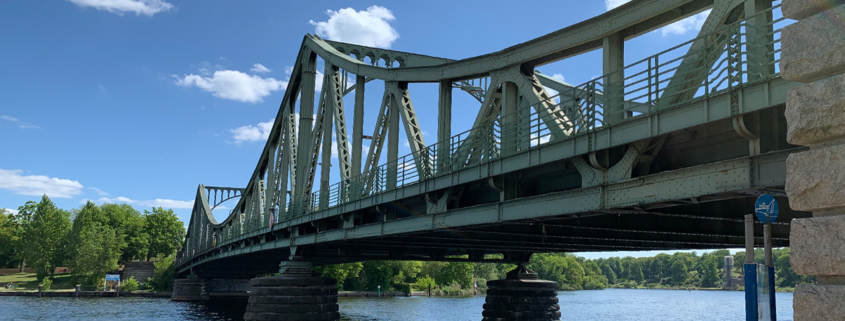Constructing bridges over Water vs. Land
Constructing bridges over different terrains, whether river deep or mountain high, requires different building techniques. There are specific challenges and strategies for construction bridges over land and water, such as specific foundation requirements, surveying needs, etc. Here are some techniques and methods for constructing bridges over water versus land.
Constructing Bridges Over Water
As you can imagine, constructing bridges over water is a unique process from land construction. There are a variety of techniques that can be used to account for the more difficult terrain and building conditions. For example, the commonly used Cofferdam technique is utilized when builders construct a wall sealed into the seafloor that surrounds the construction space. Then, workers can drain the water from the wall and utilize the dry area to construct the bridge’s foundation. Another popular technique is the Battered Pile method, where large foundational poles made of concrete or steel are plunged into the earth beneath the water in order to create a stand-like base for the structure on top.
Working through and around water is challenging. But luckily years of engineering innovations have yielded reliable building techniques for constructing bridges over water.
Different Building Conditions
Bridges over water often use similar materials to land-based bridges – like concrete, steel, stone – but there are other factors that make this building process different then constructing bridges on land. Constructing bridges in this environment means that the bridge design has to allow massive water weight and pressure to pass through it. Some of the most famous bridges in the world are suspension bridges that cover long distances over water, and have been equipped to withstand that pressure and movement.
Additionally, depending on how deep the body of water is, builders might need to employ some mapping and imaging methods, to get an idea of the terrain that they are looking to build on. Specific things to measure include: how deep the water is, the type of sand/soil at the bottom of the water, and existing animal habitats or ecosystems that construction would disrupt.
There are lots of things to consider when planning an underwater construction project, specifically if builders are constructing bridges that will pass over long distances. But successful projects to date have shown that it can be done!
Building the Best with U.S. Bridge
Whether you’re building a bridge over land or sea, the U.S. Bridge team provides comprehensive and high-quality service that is friendly and time-efficient. As leaders in the construction industry, we know the importance of utilizing top of the line materials, unique and reliable designs, and the industry’s top engineers.
Get in touch with our team now to begin bringing your construction project to life, or simply use our exclusive Bridgescope tool for a jumpstart.



